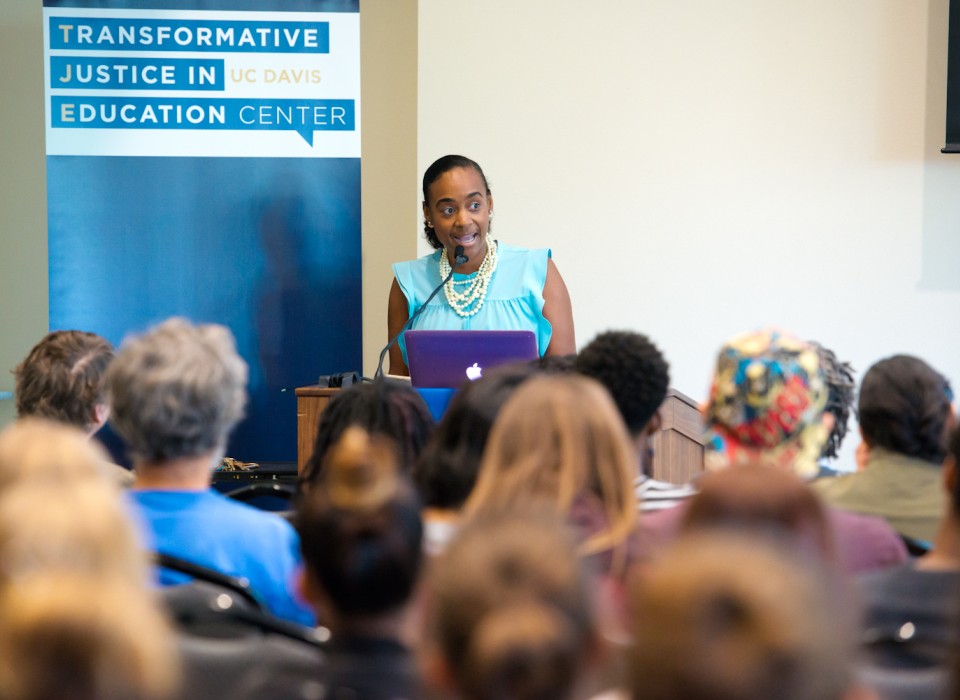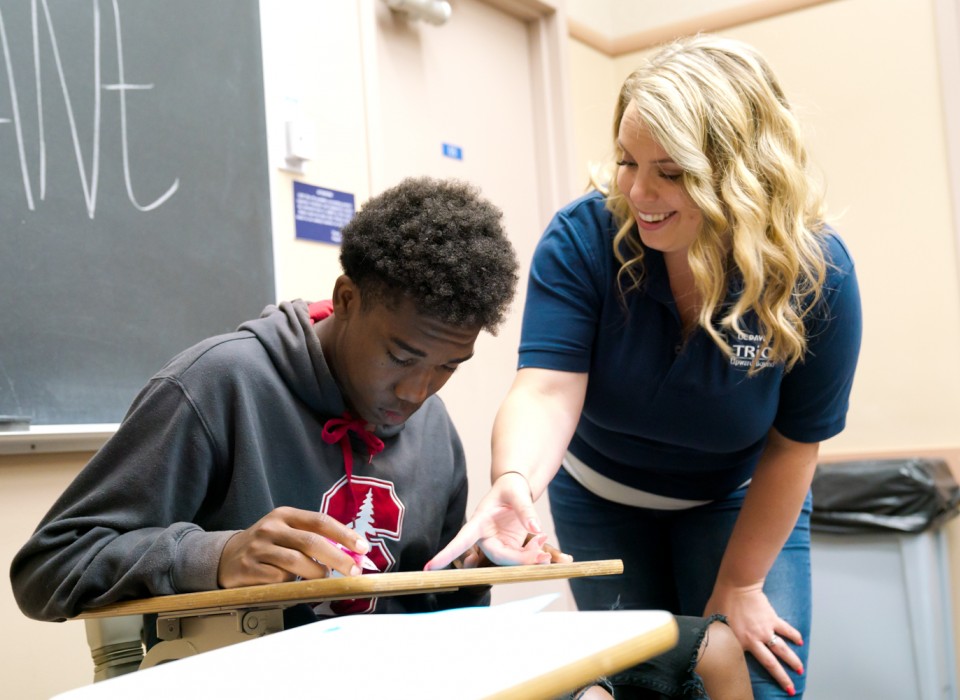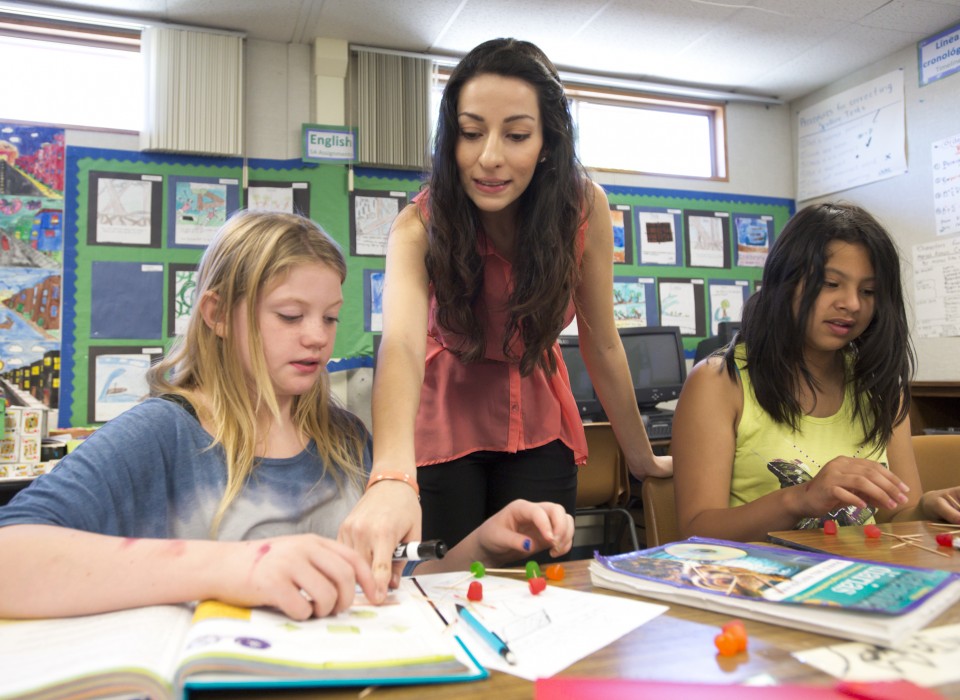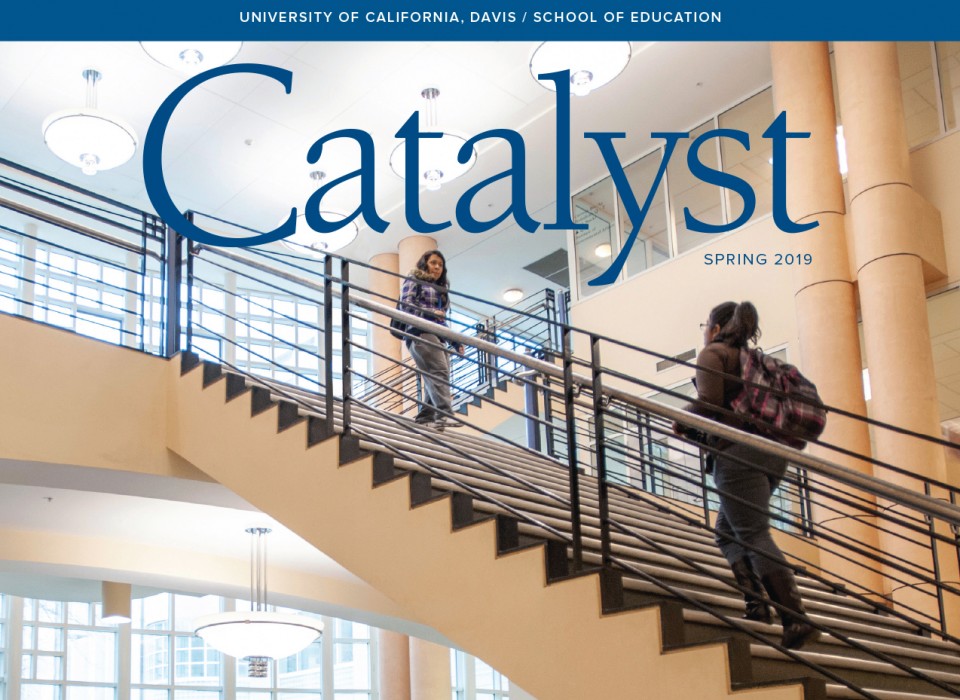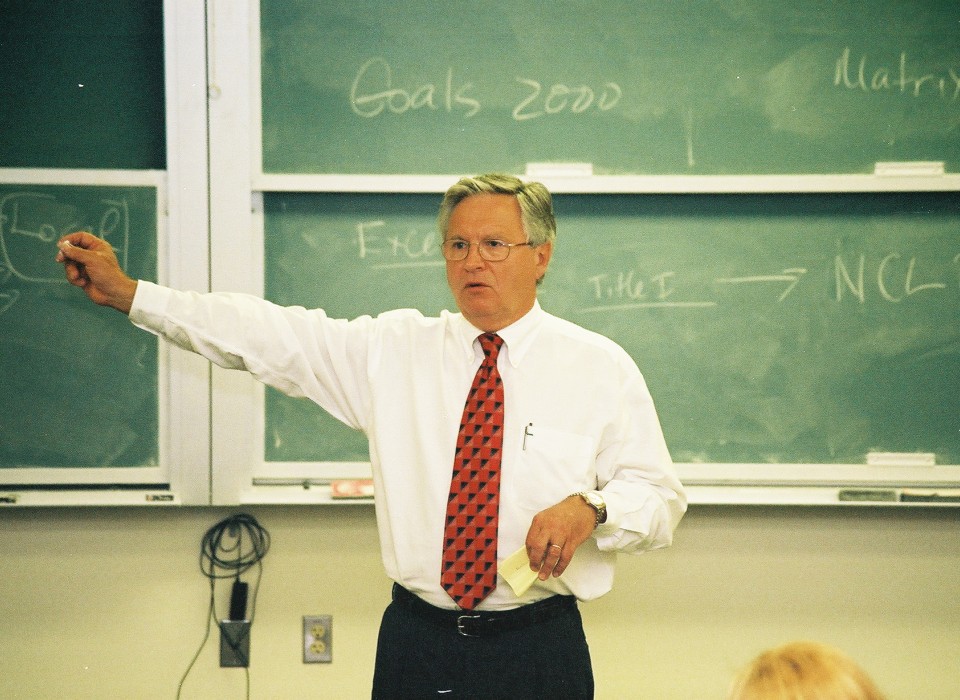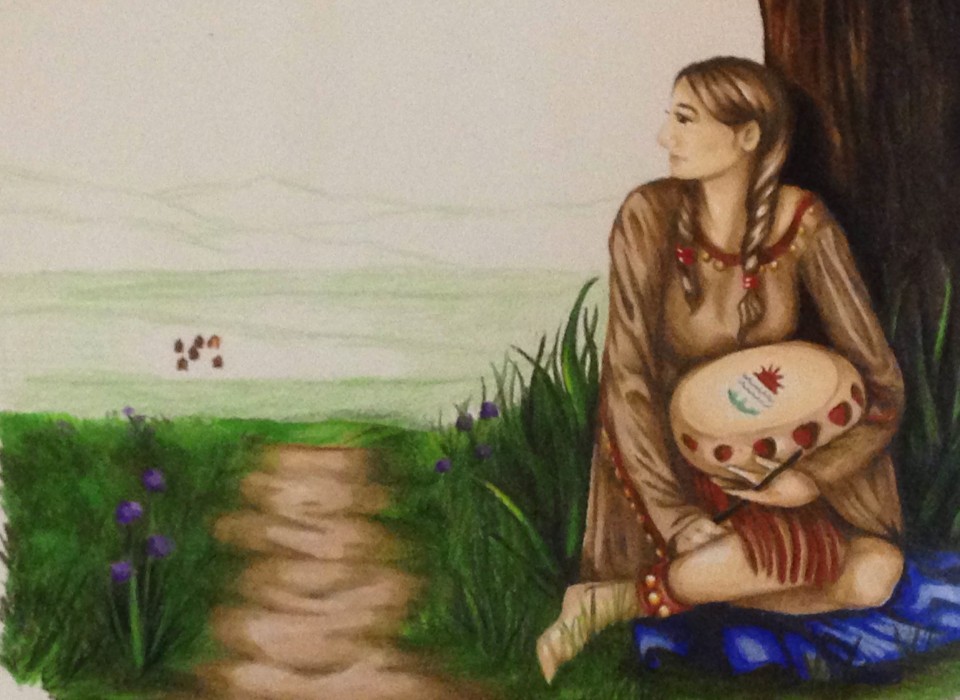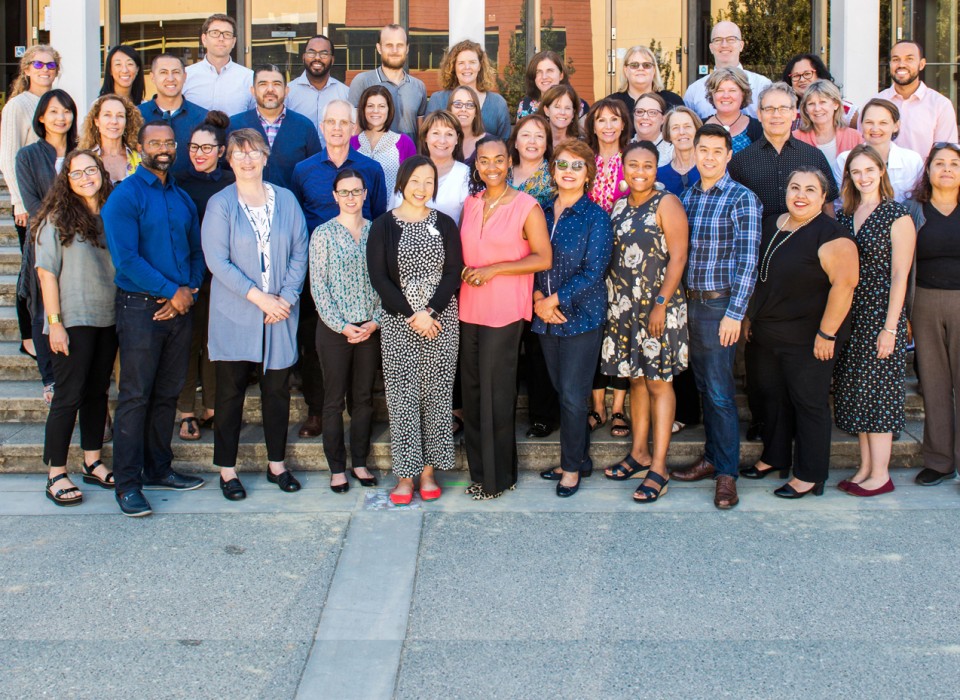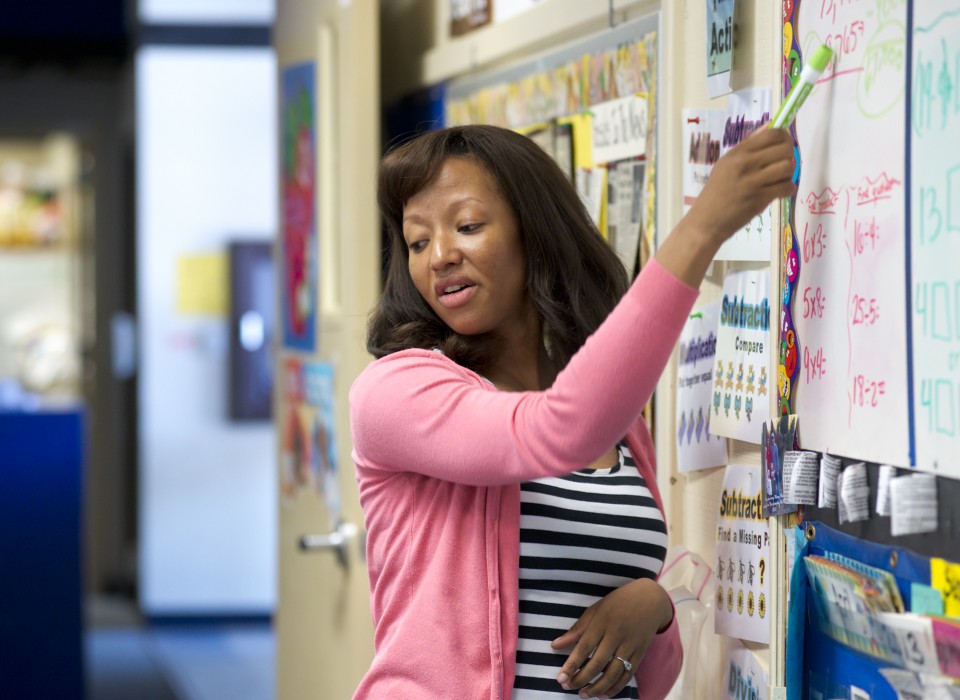2025 Field Trip to the Nimbus Hatchery
Spinning Salmon Students Experience Science in Action at Nimbus Hatchery
 Last week, Youth Education Program
Manager, Peggy Harte, was able to join a group of students
participating in the Spinning
Salmon program, taking their research questions and learnings
into the field with a visit to the Nimbus Fish
Hatchery. This trip was more than just a chance to observe
fish up close—it was an opportunity for students to connect their
participatory data to the work done at the hatchery, informed by
the salmon research being conducted across the state.
Last week, Youth Education Program
Manager, Peggy Harte, was able to join a group of students
participating in the Spinning
Salmon program, taking their research questions and learnings
into the field with a visit to the Nimbus Fish
Hatchery. This trip was more than just a chance to observe
fish up close—it was an opportunity for students to connect their
participatory data to the work done at the hatchery, informed by
the salmon research being conducted across the state.
Students participating in this field trip were from the Solano County Office of Education’s Deaf and Hard of Hearing Program. Their teacher, Carly Davis, has been working with the Center for Community and Citizen Science to expand access to programs like these for her students. Coordinating with Fish & Wildlife Interpreter Molly Shea (who also happens to be fluent in ASL) at the California Department of Fish and Wildlife’s Nimbus Fish Hatchery, the team (Peggy, Carly, and Molly) was able to develop a field trip whereby students could connect their classroom learning with lived experience, all the while being able to communicate their observations and questions in their first language, ASL. Attending the field trip was NOAA B-WET Program Director, Seaberry Nachbar who came to participate in this amazing field trip and witnessed first hand what this type of access can look like.
Carly first began engaging her students with the Spinning Salmon project two years ago.
“Working with the Center provided accessible opportunities for my Deaf high school students to do hands-on, authentic scientific research, and work directly with professional researchers for the first time in their lives.”
One key component of this field trip was being able to connect with a member of the hatchery team who was also fluent in ASL. Molly was able to connect the student research experience in their classroom with what they were seeing in action at the hatchery. Signing with the students in real time allowed Molly to facilitate comfortable conversations that explored salmon, river ecosystems, and hatchery management. Their experience reinforced the importance of data collection in monitoring fish populations and gave students the chance to see a broader dataset that can inform fisheries management.
This visit also showcased how easily science can be made accessible and inclusive. Molly was able to lead the group, ensuring that all students—regardless of hearing status—could fully engage with the experience. Her interpretation allowed for seamless communication between students, educators, and hatchery staff, reinforcing the Spinning Salmon program’s commitment to equity in science learning.
 “Regardless of the barriers and
severe language deprivation they’ve faced, experiences like the
Nimbus Hatchery field trip and projects like the Spinning Salmon
program bridge the academic and language gaps while building
resilience and representation. After returning from the field
trip, discussions around dams, rivers, wildlife, hatcheries,
conservation, ecosystems, Molly’s job, and Molly’s nametag
indication she signs have been ongoing and natural.”
“Regardless of the barriers and
severe language deprivation they’ve faced, experiences like the
Nimbus Hatchery field trip and projects like the Spinning Salmon
program bridge the academic and language gaps while building
resilience and representation. After returning from the field
trip, discussions around dams, rivers, wildlife, hatcheries,
conservation, ecosystems, Molly’s job, and Molly’s nametag
indication she signs have been ongoing and natural.”
The Spinning Salmon program has been working to expand access to these types of experiences because all students deserve inquiry-based education that connects them to real-world science. By integrating hands-on fieldwork, technology, and community partnerships, the program is creating opportunities for all types of learners to engage in meaningful scientific exploration. Ensuring that every student has the chance to participate in these experiences helps build a more inclusive and representative generation of environmental scientists and conservationists.
Field trips like these are at the heart of the Spinning Salmon program, providing students with immersive learning experiences that build curiosity, deepen understanding, and inspire future environmental stewards. By blending classroom investigations with real-world fieldwork, we are helping students see themselves as scientists, capable of making meaningful contributions to conservation.
 With their observations recorded
and new knowledge in hand, these students are now back in the
classroom, eager to continue their work on the Spinning Salmon
project. The data they collect will become part of their ongoing
investigations into salmon populations, demonstrating how
community and citizen science empowers students to take an active
role in understanding and protecting the natural world.
With their observations recorded
and new knowledge in hand, these students are now back in the
classroom, eager to continue their work on the Spinning Salmon
project. The data they collect will become part of their ongoing
investigations into salmon populations, demonstrating how
community and citizen science empowers students to take an active
role in understanding and protecting the natural world.
As we move forward, we’re excited to see how these young scientists continue to engage with salmon conservation. If this visit to the Nimbus Hatchery is any indication, the next generation of environmental leaders is already well on its way!

